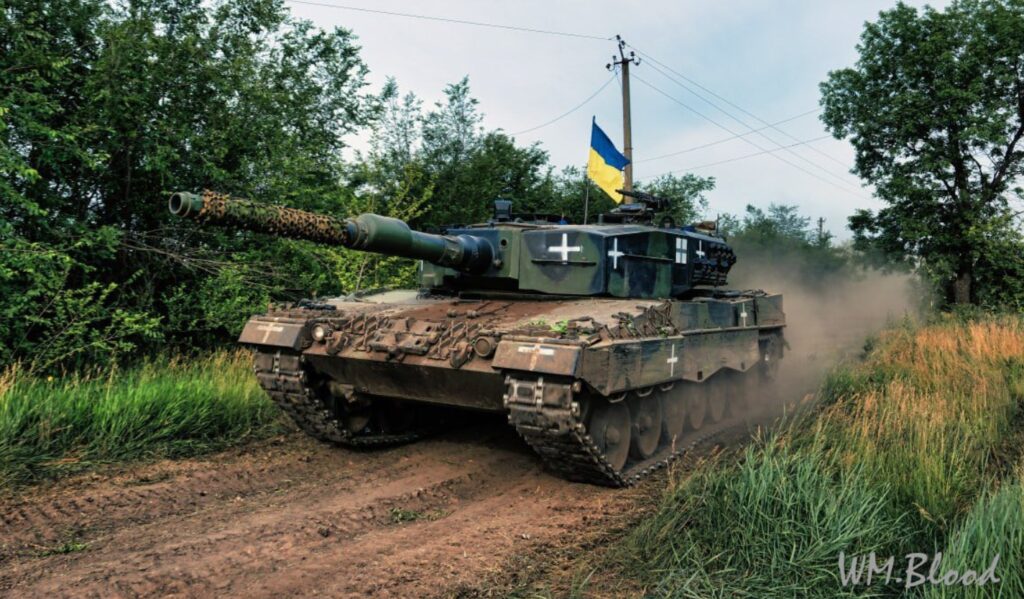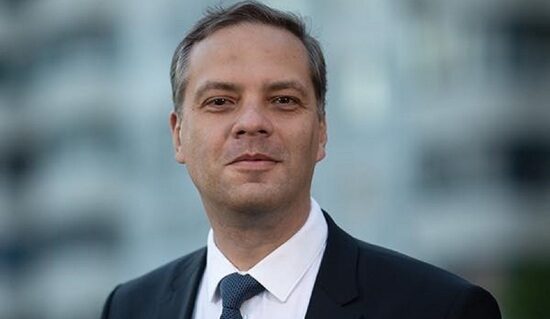The world’s largest bank says Ukraine will fail—apparently forgetting Ukraine doesn’t take orders

- JPMorgan assigns Ukrainian reconstruction 2-to-1 odds of failure despite €326 billion in European defense spending
- Ukraine’s Western integration employs 300,000 people through industrial partnerships approaching irreversibility
- Bank’s assessment could become self-fulfilling prophecy by constraining investment flows Ukraine needs to succeed
- Analysis repeats same errors that underestimated Ukrainian resilience in 2022, delaying crucial early support
- Russia spends 7.1% of GDP on military while Ukraine builds permanent institutional ties with the West
When JPMorgan assigned Ukrainian reconstruction 2-to-1 odds of failure, the world’s largest bank wasn’t just making a prediction about Ukraine’s future – it was essentially wagering against the same Ukrainian agency that has consistently defied institutional expectations.
The timing appears particularly significant. By 2025, Ukraine’s Western integration had gained substantial momentum: industrial partnerships employing 300,000 people, €326 billion in European defense spending including Ukraine, and institutional lock-in approaching irreversibility.
But JPMorgan’s pessimistic assessment doesn’t just predict Ukrainian failure – it could help cause it by constraining the very investment flows that enable Ukrainian agency to succeed.
When an institution managing $3.2 trillion makes such assessments, they influence insurance rates, loan guarantees, and foreign direct investment that could determine outcomes.
This isn’t theoretical. In February 2022, Western predictions of Ukrainian collapse created reluctance to provide robust support—ex-Foreign Minister Dmytro Kuleba described how German officials looked at him as if he were “doomed.” This pessimism delayed crucial early assistance, contributing to territorial losses that stronger initial support might have prevented.
JPMorgan’s economic pessimism now threatens similar delays in reconstruction funding.
A documented pattern of misjudgment
The problem is that JPMorgan’s analysis repeats the same analytical errors that made Western institutions so wrong about Ukraine in 2022.
They consistently underestimated Ukrainian resilience while overestimating Russian strategic capabilities. The fundamental mistake is treating Ukraine as a passive object of great power competition rather than an actor shaping its own destiny.
When Russia launched its full-blown invasion in 2022, analysts assumed Ukraine would behave like a typical post-Soviet state—passive, corrupt, waiting for rescue, destined to fall while Russia captures the country in weeks.
Instead, Ukraine chose to fight, mobilize civil society, and transform its institutions while under bombardment.

“Dudes with track pants and hunting rifles”: why Ukraine became the West’s most embarrassing blind spot
Just yesterday, Ukrainian forces demonstrated this agency again with coordinated drone strikes against Russian strategic bombers deep inside Russian territory—the kind of operation analysts thought impossible three years ago.
However, in 2022, the false military predictions delayed crucial support, creating a self-fulfilling prophecy that Ukraine continues to defy at enormous cost.
JPMorgan’s current prediction—that Russia has a 2-to-1 chance of dragging Ukraine back into its orbit—repeats this analytical blind spot about Russian durability while overlooking Ukrainian institutional momentum that has proven remarkably resilient under extreme pressure.
JPMorgan’s prediction repeats an analytical blind spot about Russian durability while overlooking Ukrainian institutional resilience and momentum.
The bank’s track record on major predictions raises additional concerns.
When JPMorgan CEO Jamie Dimon predicted an economic “hurricane” in 2022 that never materialized, investors who followed his advice missed significant market gains. When the bank called Bitcoin a “fraud” in 2017 before eventually offering it to clients, the consequences were financial.
Now the stakes are higher—a country fighting for its survival depends on the investment flows their assessment could influence.
JPMorgan’s four-scenario framework
The bank divides Ukraine’s future into scenarios borrowed from other countries’ experiences: “South Korea” (15%), “Israel” (20%), “Georgia” (50%), and “Belarus” (15%).
The structure reveals their pessimism—negative scenarios representing 65% probability of Russian control versus just 35% for successful Western integration.
Their highest-probability Georgia scenario—reverting into the Kremlin’s orbit— draws on sophisticated analysis of institutional anchoring.
The logic flows from Georgia’s experience after 2008: initial Western aid and political support “stopped short of troops and security promises,” leading over time to “political instability and democratic erosion, fostered by creeping Russian influence.”
Eventually, this produced frozen EU accession and adoption of “Kremlin-style foreign agent laws.”
The economic mechanism they identify creates particular concern.
“Risk-averse investors could choose to avoid an unstable, security-fragile environment, limiting foreign direct investment.” High insurance costs and risk premiums could undermine competitiveness, while Ukraine might “re-open vulnerable trade corridors or informal dependencies linked to Russia.”
Their Belarus scenario (15% probability) demonstrates the extreme outcome—complete vassalization where Russia achieves its maximalist demands. The key insight connecting both scenarios: even strong pro-Western sentiment can fade “if not adequately reciprocated by Western institutions.”
Why Ukraine’s trajectory differs fundamentally

JPMorgan’s structural analysis has merit, but applying Georgia’s trajectory to Ukraine overlooks critical differences that make historical analogies misleading guides for political forecasting.
Consider the vulnerabilities that enabled Georgia’s drift:
- Economic dependence: Over 15% of GDP from Russian remittances by 2022-2023
- Limited scale: 3.7 million people, $30.5 billion GDP—manageable for sustained influence operations
- Oligarch capture: Bidzina Ivanishvili’s wealth enabled systematic institutional control
- Civil society erosion: Despite initial protests, “foreign agent” laws were ultimately implemented

“Not another Russian colony”: Georgia erupts against Moscow’s shadow rule
Ukraine presents fundamentally different structural characteristics:
- Proven mobilization capacity at scale: Ukraine has sustained one million personnel under arms while maintaining government functionality under direct assault—institutional resilience tested at scales Georgia never faced.
- Economic decoupling track record: Unlike Georgia’s increasing Russian economic dependence, Ukraine systematically reduced Russian ties after 2014, creating fundamentally different vulnerability patterns.
- Civil society effectiveness: Belarus demonstrates complete Russian capture when civil society cannot mount sustained resistance. Georgia shows how gradual erosion can succeed despite protests—thousands demonstrated against “foreign agent” laws but ultimately failed to prevent implementation. Ukraine’s trajectory differs markedly: Euromaidan demonstrated not just mobilization capacity, but successful resistance that twice prevented governments from drifting toward Russian influence.
Ukraine has already withstood pressures that gradually captured Georgia and completely overwhelmed Belarus, but at much higher intensity and longer duration.
The critical difference: Ukraine has already withstood pressures that gradually captured Georgia and completely overwhelmed Belarus, but at much higher intensity and longer duration.
However, JPMorgan’s framework assumes Ukraine will eventually succumb to pressures it has already proven capable of resisting at levels that destroyed institutional resistance elsewhere in the post-Soviet space.
Institutional integration approaching irreversibility

JPMorgan’s scenarios assume current Western support could gradually fade, but examining actual commitments reveals integration approaching irreversibility. This isn’t potential future support being debated—it’s operational infrastructure already employing hundreds of thousands.
- Financial infrastructure creating permanent dependencies: The EU has delivered $158 billion with $54 billion more locked through 2027 for EU accession. $300 billion in frozen Russian assets generate ongoing funding streams—the first €1.5 billion tranche already disbursed with decades of payments planned.
- Industrial integration beyond reversal: Rheinmetall, KNDS, and Nammo have established production facilities in Ukraine. Approximately 500 arms producers now employ nearly 300,000 people. Every Western weapons system creates long-term dependency relationships through spare parts, training, and maintenance contracts.
- Growing military integration: Among Ukraine’s military deliveries from Western partners are 84 Multiple Launch Rocket Systems, 740 howitzers, 78 air defense systems, 939 tanks, and 1,271 armored personnel carriers. This hardware creates permanent dependency chains that lock in decades of partnership. Ukraine’s arms industry achieved 69% revenue growth to $2.2 billion in 2023—the fastest increase ever recorded.
- Security architecture: Twenty-nine Allies and partners have signed bilateral security agreements with Ukraine. The NATO-Ukraine Joint Analysis, Training and Education Centre has officially opened—an institutional integration that Georgia never achieved.

JPMorgan’s concern about Western fatigue deserves serious consideration—democratic societies do struggle with sustained commitments. But their model may underestimate how current integration creates constituencies for continued support.
Each arms factory employing local workers creates lobbying pressure for sustained partnerships. Each EU legal framework integrated into Ukrainian governance creates bureaucratic momentum. Each training program for Ukrainian personnel creates institutional relationships that transcend political cycles.
The contrast with Georgia is instructive: Georgia received aid but never achieved this depth of institutional integration.
By 2008, Georgia had bilateral relationships; by 2025, Ukraine has multilateral institutional embedding that would require deliberate dismantling by dozens of countries simultaneously.
The replacement economy in action
JPMorgan assumes Russian economic pressure will eventually overcome Ukrainian resistance, but examining the underlying economic dynamics reveals a different trajectory emerging.
- Western economic integration with Ukraine is accelerating: According to SIPRI data, European defense spending increased 30% since 2021 to €326 billion—and this rearmament benefits Ukraine through weapons transfers and industrial partnerships, rather than excluding it from Europe’s defense ecosystem. Meanwhile, each round of sanctions against Russia creates permanent market displacement as Western competitors develop their own supply chains and lobbying influence, making reversal increasingly difficult.
- Russian economic sustainability appears increasingly strained: Russia’s military expenditure reached $149 billion in 2024—7.1% of GDP, the highest since the Cold War. This massive military spending comes at the expense of domestic priorities: just 0.87% of GDP goes to healthcare and 0.7% to education. Russia has forced banks to fund half its war costs, requiring businesses to borrow at punitive 21% interest rates that threaten long-term economic viability.
- The contrast in sustainability models is striking: While Ukraine allocates an even higher 34% of GDP to defense, it does so with massive external support that strengthens rather than weakens its economy. Russia burns through domestic resources alone, creating an unsustainable trajectory that favors Ukraine’s strategy of externally supported resistance over Russia’s self-funded pressure campaign.
We’re witnessing a managed demolition of Russian imperial pretensions with Ukraine as both the primary instrument and beneficiary.
What we’re witnessing is a managed demolition of Russian imperial pretensions with Ukraine as both the primary instrument and beneficiary. Every sector where Russia has been sanctioned gets permanently replaced by Western competitors who develop their own lobbying power and political influence.

Russia forced banks to secretly fund half its war costs. Can its economy survive? What does this mean for Ukraine?
Why JPMorgan’s answer may be wrong
JPMorgan deserves credit for identifying a vulnerability that Western analysts often miss: states without firm institutional anchors can drift despite strong popular sentiment. Their insight about the relationship between security guarantees and economic confidence is particularly valuable.
The Georgia analogy captures an important dynamic—how gradual erosion can succeed where direct pressure fails. Their concern about Western fatigue over 5-10 years reflects a genuine understanding of how democratic attention spans work.
Where we disagree is not on the importance of institutional anchoring, but on whether Ukraine has already achieved sufficient integration to make drift unlikely.
The question their framework asks—will Western support prove durable enough?—is the right one. But examining the evidence suggests Ukraine’s anchoring may be stronger and Russian pressure more unsustainable than their model assumes.
Rather than whether Ukraine will drift into Russia’s orbit, the evidence suggests a different dynamic: Russia is the one under unsustainable pressure.
According to the fiscal data, Russia is burning through domestic resources at unprecedented rates while Ukraine builds permanent institutional ties with the West.
Each year of continued conflict accelerates Russia’s technological lag, demographic decline, and economic isolation while strengthening Ukraine’s Western integration.
Ukraine’s strategic orientation isn’t a future possibility being debated in scenario exercises—it’s an accomplished fact being implemented through billions in industrial infrastructure, EU legal frameworks integral to state functioning, and defense partnerships providing both security and economic opportunity.
The real risk
The real risk is that JPMorgan’s assessment becomes reality through specific market mechanisms. Research shows that major financial institutions’ risk assessments create spillover effects on borrowing costs and investment decisions.
When the world’s largest bank assigns Ukrainian reconstruction coin-flip odds of success, that assessment influences concrete decisions: Lloyd’s of London adjusting insurance premiums for Ukrainian operations, development banks requiring higher risk assessments for reconstruction loans, and private equity firms avoiding Ukrainian partnerships despite profitable opportunities.
Financial institutions that bet against Ukrainian agency do so at their own peril. The institutional momentum is already substantial, the Russian pressure increasingly unsustainable. JPMorgan may find they’ve wagered $3.2 trillion in credibility against the same resilience that has already defied their expectations for three years.
The question isn’t whether Ukraine will follow Georgia’s path—it’s whether JPMorgan will recognize their analytical blind spot before their assessment becomes a self-defeating prophecy.
